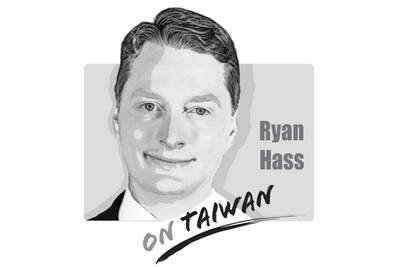About three months ago, a colleague told me that she just spent two hours teaching students the different usages of the English word "as."
I then asked her if she thought, after her dedicated efforts, her students could then use the word accurately in day-to-day conversations. Her answer, interestingly, was that she didn't think so, because it all depended on how much exposure to English the students would get outside the classroom.
I began to wonder if it is worth spending so much time teaching English grammar to students because a number of empirical studies have demonstrated that the critical factor for students' proper use of English grammar is more the result of real-life exposure than learning in the classroom. Only if grammatical structures are used in an authentic context do they have meaning.
For this reason, EFL (English as a Foreign Language) teachers have to create situations in which the students feel a need to utilize grammar in order to communicate properly in English. In other words, the students learn grammar more effectively when grammar is contextualized -- not singled out as a separate "skill" or "course."
From the 1950s through the 1980s, the manner in which grammar was taught in countries like Taiwan was not put into question, owing to a grammar-centric teaching of the language.
During this period, teaching English and teaching grammar were virtually synonymous. Questions on whether and how to teach grammar arose during the mid-1980s, as communicative language teaching, which emphasized the use of English as a means to communicate, came into fashion.
Today, only a few researchers and teachers advocate "no grammar at all" in the teaching of English, while most experts think that appropriate attention to grammar can speed up learning.
Research has shown that variables such as age, proficiency level, language skills, needs and goals can help teachers determine the role of grammar in teaching.
Note that grammar is important to some extent in all variables, depending on the continuum of each. In terms of abstraction capabilities and levels of cognition, the focus on grammar is more important to adults, whereas it is less important to young children and somewhere in between to teenagers.
Thus, to teach or not to teach English grammar may not be a question anymore; how to teach it is now the real issue and this is where teaching professionals can't seem to agree.
One of the most frequently asked questions is: should English grammar be taught explicitly or implicitly? Many of those who were born before the early 1980s in Taiwan had to experience the explicit (or deductive) method of grammar instruction, with direct teacher explanations followed by related exercises tailored to reflect entrance exams.
By contrast, implicit (or inductive) teaching occurs when students are exposed to various language forms and are left to discover grammar rules on their own. Advocates of this approach argue that students can acquire English naturally if they are provided with an adequate amount of comprehensible input.
Most students prefer the explicit approach because it requires less mental effort.
Many researchers think that in most contexts, the implicit approach is more appropriate because it goes with natural language acquisition. For this reason, one of the most important homework assignments for EFL learners is to get English input outside the classroom.
It is language use -- not the conscious focus on grammar -- that accounts for effective communication and interaction between human beings.
Shih-Fan Kao is an assistant professor at Jin-wen University of Science and Technology.
The diplomatic dispute between China and Japan over Japanese Prime Minister Sanae Takaichi’s comments in the Japanese Diet continues to escalate. In a letter to UN Secretary-General Antonio Guterres, China’s UN Ambassador Fu Cong (傅聰) wrote that, “if Japan dares to attempt an armed intervention in the cross-Strait situation, it would be an act of aggression.” There was no indication that Fu was aware of the irony implicit in the complaint. Until this point, Beijing had limited its remonstrations to diplomatic summonses and weaponization of economic levers, such as banning Japanese seafood imports, discouraging Chinese from traveling to Japan or issuing

There has been much catastrophizing in Taiwan recently about America becoming more unreliable as a bulwark against Chinese pressure. Some of this has been sparked by debates in Washington about whether the United States should defend Taiwan in event of conflict. There also were understandable anxieties about whether President Trump would sacrifice Taiwan’s interests for a trade deal when he sat down with President Xi (習近平) in late October. On top of that, Taiwan’s opposition political leaders have sought to score political points by attacking the Lai (賴清德) administration for mishandling relations with the United States. Part of this budding anxiety
The diplomatic spat between China and Japan over comments Japanese Prime Minister Sanae Takaichi made on Nov. 7 continues to worsen. Beijing is angry about Takaichi’s remarks that military force used against Taiwan by the Chinese People’s Liberation Army (PLA) could constitute a “survival-threatening situation” necessitating the involvement of the Japanese Self-Defense Forces. Rather than trying to reduce tensions, Beijing is looking to leverage the situation to its advantage in action and rhetoric. On Saturday last week, four armed China Coast Guard vessels sailed around the Japanese-controlled Diaoyutai Islands (釣魚台), known to Japan as the Senkakus. On Friday, in what
On Nov. 8, newly elected Chinese Nationalist Party (KMT) Chairwoman Cheng Li-wun (鄭麗文) and Vice Chairman Chi Lin-len (季麟連) attended a memorial for White Terror era victims, during which convicted Chinese Communist Party (CCP) spies such as Wu Shi (吳石) were also honored. Cheng’s participation in the ceremony, which she said was part of her efforts to promote cross-strait reconciliation, has trapped herself and her party into the KMT’s dark past, and risks putting the party back on its old disastrous road. Wu, a lieutenant general who was the Ministry of National Defense’s deputy chief of the general staff, was recruited